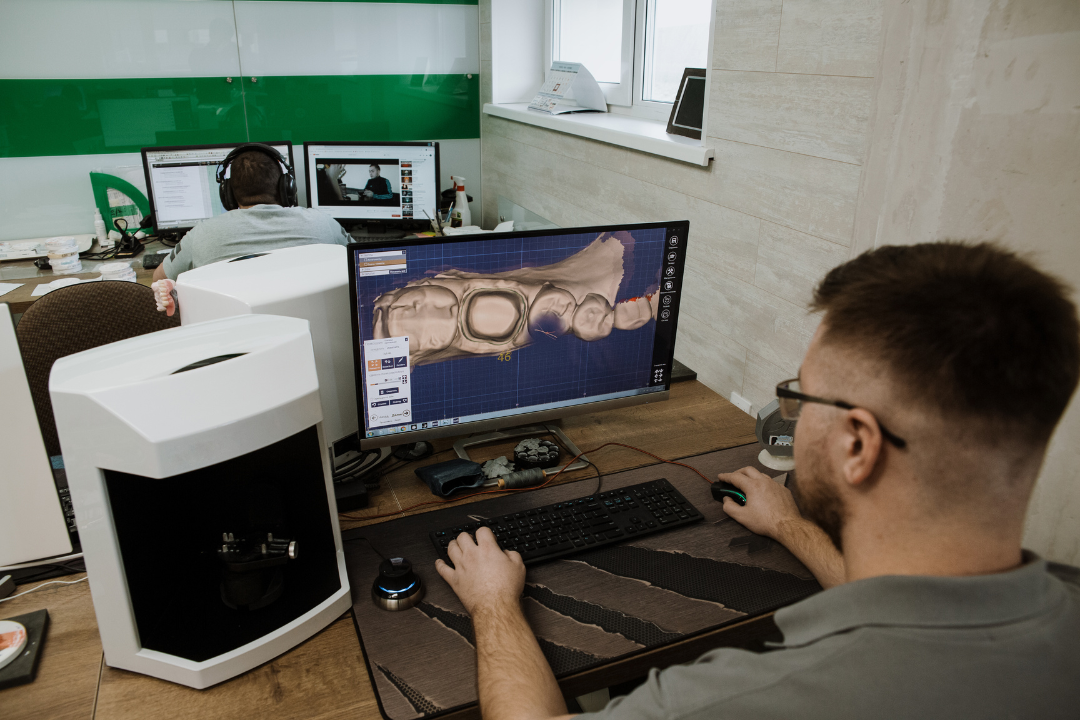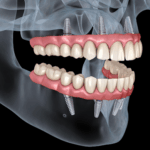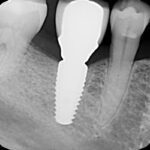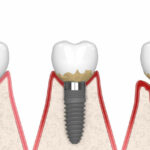Dental implants have become the gold standard for tooth replacement, offering long-lasting, natural-looking results that restore both function and aesthetics. At Park Avenue Dental Group, we specialize in modern implant dentistry that changes lives. In this blog, we’ll explore what dental implants are, how they work, and how far they’ve come thanks to technological advances and clinical innovation.
What Are Dental Implants?
A dental implant is a small, titanium post that serves as an artificial tooth root. Surgically placed into the jawbone, the implant fuses with bone tissue through a process called osseointegration. Once healed, a custom crown, bridge, or denture is attached to the implant, offering unmatched stability and performance.
Components of a Dental Implant
Dental implants typically consist of three parts:
- Implant Post – The titanium root that integrates with the jawbone.
- Abutment – The connector piece that joins the implant to the restoration.
- Crown or Prosthesis – The visible portion, made to match your natural teeth.
Benefits of Dental Implants
- Natural Appearance: Implants are customized to blend seamlessly with your smile.
- Durability: With proper care, they can last decades.
- Preservation of Bone: Prevents bone loss and supports facial structure.
- Improved Function: Eat, speak, and smile confidently without slipping or discomfort.
- No Impact on Adjacent Teeth: Unlike bridges, implants do not require grinding down neighboring teeth.
Who Is a Candidate for Implants?
Most adults in good general health with sufficient jawbone density are candidates for dental implants. Even those with bone loss may qualify after undergoing a bone graft. During your consultation, we’ll perform a detailed exam, including 3D imaging, to determine your suitability.
The Evolution of Dental Implants
Dental implants have a rich history dating back thousands of years. However, it wasn’t until the mid-20th century that modern implantology emerged. Here’s how the technology has evolved:
1. Ancient Techniques Archeological evidence shows early attempts at tooth replacement using materials like shells, stones, and carved bamboo in ancient cultures. These early attempts lacked biocompatibility and functionality.
2. 1950s: Titanium Discovery Dr. Per-Ingvar Brånemark, a Swedish orthopedic surgeon, discovered titanium’s unique ability to fuse with bone. This breakthrough launched the era of modern dental implants.
3. 1980s–1990s: Standardization and Growth Implants became more mainstream with improved surgical techniques, better materials, and prosthetic designs that enhanced comfort and predictability.
4. 2000s–Present: Digital Implant Dentistry Today’s dental implants benefit from 3D imaging, guided surgery, CAD/CAM fabrication, and enhanced surface coatings for faster healing. Procedures are less invasive, more precise, and offer quicker recovery times.
Implant Innovations at Park Avenue Dental Group
We use cone-beam CT imaging for precision planning and digital workflows for faster turnaround. Our custom abutments and restorations are crafted in partnership with leading dental labs, ensuring a perfect fit. For patients with extensive tooth loss, we offer All-on-4 implants, mini implants, and implant-supported dentures.
Post-Procedure Care
Proper oral hygiene and routine check-ups are key to long-term implant success. Patients should brush, floss, and use non-abrasive products. We provide follow-up visits to monitor healing and offer guidance on implant maintenance.
Comparing Implants to Other Options
- Implants vs. Bridges: Implants are independent and preserve adjacent teeth, while bridges may stress surrounding structures.
- Implants vs. Dentures: Implants are fixed and feel more like natural teeth. Dentures may shift or need relining over time.
Success Rates and Longevity
Dental implants have a 95–98% success rate and can last a lifetime with proper care. Smoking, poor hygiene, and systemic health conditions may affect outcomes, so we guide patients through best practices.
Cost Considerations and Financing
While implants may have a higher upfront cost, their longevity and benefits often make them a more cost-effective solution over time. Park Avenue Dental Group offers transparent pricing, insurance support, and financing options to make implants accessible to more patients.
Conclusion
Dental implants have revolutionized modern dentistry, offering a permanent solution for missing teeth that improves both quality of life and oral health. At Park Avenue Dental Group, we combine decades of expertise with cutting-edge tools to deliver transformative results. Schedule your implant consultation today and take the first step toward a stronger, more confident smile.
FAQs
- How long does it take to get a dental implant? The process typically takes 3–6 months, including healing and crown placement.
- Are dental implants painful? Most patients experience minimal discomfort, often less than a tooth extraction. Local anesthesia and sedation are available.
- What if I’ve lost bone in my jaw? Bone grafting may be recommended to rebuild the jawbone before implant placement.
- How long do dental implants last? With proper care, dental implants can last 20+ years and often a lifetime.
- Can dental implants replace multiple teeth? Yes, implants can support single crowns, bridges, or full arches depending on your needs.







